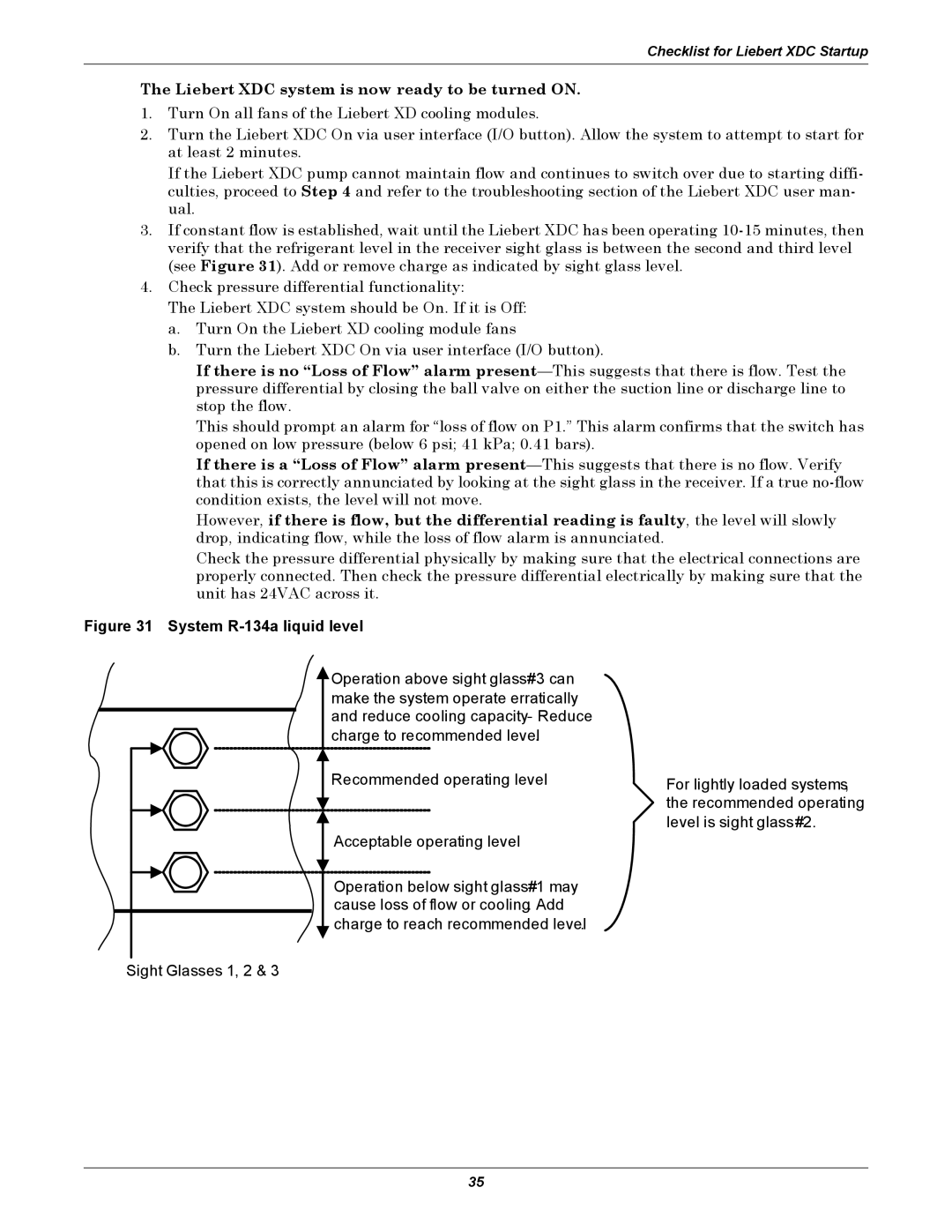
Checklist for Liebert XDC Startup
The Liebert XDC system is now ready to be turned ON.
1.Turn On all fans of the Liebert XD cooling modules.
2.Turn the Liebert XDC On via user interface (I/O button). Allow the system to attempt to start for at least 2 minutes.
If the Liebert XDC pump cannot maintain flow and continues to switch over due to starting diffi- culties, proceed to Step 4 and refer to the troubleshooting section of the Liebert XDC user man- ual.
3.If constant flow is established, wait until the Liebert XDC has been operating
4.Check pressure differential functionality:
The Liebert XDC system should be On. If it is Off:
a.Turn On the Liebert XD cooling module fans
b.Turn the Liebert XDC On via user interface (I/O button).
If there is no “Loss of Flow” alarm
This should prompt an alarm for “loss of flow on P1.” This alarm confirms that the switch has opened on low pressure (below 6 psi; 41 kPa; 0.41 bars).
If there is a “Loss of Flow” alarm
However, if there is flow, but the differential reading is faulty, the level will slowly drop, indicating flow, while the loss of flow alarm is annunciated.
Check the pressure differential physically by making sure that the electrical connections are properly connected. Then check the pressure differential electrically by making sure that the unit has 24VAC across it.
Figure 31 System R-134a liquid level
![]() Operation above sight glass#3 can make the system operate erratically and reduce cooling capacity- Reduce charge to recommended level.
Operation above sight glass#3 can make the system operate erratically and reduce cooling capacity- Reduce charge to recommended level.
Recommended operating level
Acceptable operating level
Operation below sight glass#1 may cause loss of flow or cooling. Add charge to reach recommended level.
For lightly loaded systems, the recommended operating level is sight glass#2.
Sight Glasses 1, 2 & 3
35
